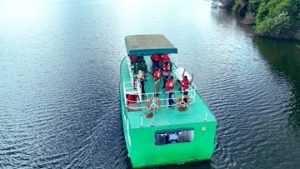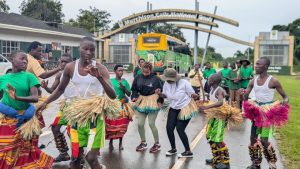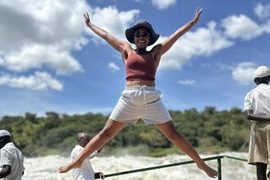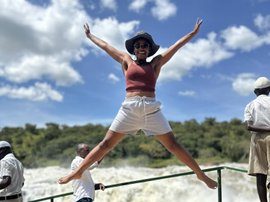Uganda’s wild side came alive this week as thousands of people thronged the country’s savannah national parks for the highly anticipated Open Park Day 2025, a three-day event aimed at promoting tourism, conservation awareness, and community involvement in protecting Uganda’s natural heritage.
The initiative, led by the Uganda Wildlife Authority (UWA), opened the gates of five iconic protected areas—Murchison Falls National Park, Queen Elizabeth National Park, Lake Mburo National Park, Kidepo Valley National Park, and Pian Upe Game Reserve—offering free park entry, free vehicle access, and guided game drives to visitors from September 25 to 27.
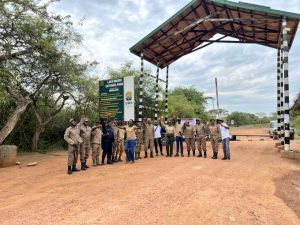
“The gates swung open, and the people answered! Lake Mburo National Park roared alive as thousands stormed in for Open Park Day 2025. It’s time for the communities to celebrate nature, culture, and unity like never before, appreciating Uganda’s rich biodiversity,” UWA announced in a statement on Day 1.
Big Crowds, Big Smiles
From the bustling savannahs of Queen Elizabeth National Park to the rugged wilderness of Kidepo Valley, communities turned up in droves, eager to experience the wildlife spectacles normally out of reach for many.

“Nothing brings us more joy than seeing the community smile. Here’s how it’s going at Kidepo Valley National Park during Open Park Day 2025,” UWA shared, alongside photos of excited visitors on game drives.
In Pian Upe, Eastern Uganda’s largest wildlife reserve, the turnout was equally impressive. “We are glad to receive communities flooding Pian Upe National Park for Open Park Day 2025 Day 2,” UWA posted, noting the enthusiasm with which locals embraced the rare opportunity to explore their natural heritage for free.
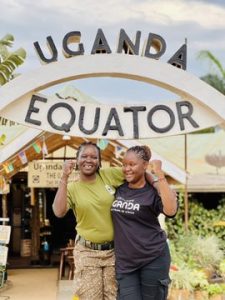
Tourism and Community Livelihoods
The celebrations coincided with the Sustainable Tourism Conference in Arua, where leaders and tourism stakeholders discussed the industry’s role in regional development and economic growth.
State Minister for Tourism, Wildlife, and Antiquities, Hon. Martin Mugarra, highlighted tourism’s growing impact on livelihoods in northern Uganda.
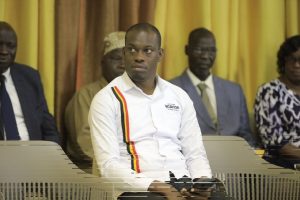
“Today, more than 100 people are employed in tourism from Arua alone. Tourism is not only vital to government revenues but also to the livelihoods of our communities. West Nile, as a gateway for trade between Uganda and the Democratic Republic of Congo, stands out as a strategic region. What remains is for us, as the people of West Nile, to embrace our responsibility and make the most of these opportunities,” Hon. Mugarra said.
Director of Tourism at the Ministry, Mr Basir Ajer, emphasised the need to diversify Uganda’s tourism experiences. “Tourism reveals itself in many forms—through the people, the food, the culture, and the sense of peace and stability a destination offers.”
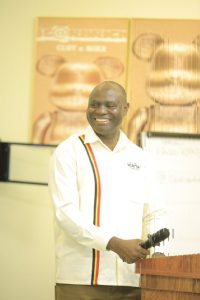
“At its core, tourism itself is the ultimate product. The value visitors bring depends on the quality and variety of experiences available. That’s why it is essential to recognise tourism products and continuously improve them to meet and exceed expectations,” Ajer explained.
Conservation Meets Technology
In a major boost for wildlife protection efforts, UWA Executive Director Dr James Musinguzi signed a Memorandum of Understanding with EarthRanger, a cutting-edge conservation technology platform developed by the Allen Institute for Artificial Intelligence (AI2).
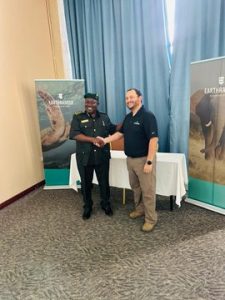
The platform provides advanced data management and real-time monitoring tools to track wildlife movements, combat poaching, and manage ecosystems more effectively. “This partnership will strengthen our conservation efforts and help ensure that Uganda’s wildlife heritage is protected for future generations,” Dr Musinguzi said during the signing ceremony.
With free access, cultural performances, and conservation education, Open Park Day 2025 has not only brought joy to communities but also deepened appreciation for Uganda’s protected areas and the tourism opportunities they hold. For many, the experience offered more than wildlife encounters—it was a reminder that Uganda’s natural beauty belongs to all its people.
